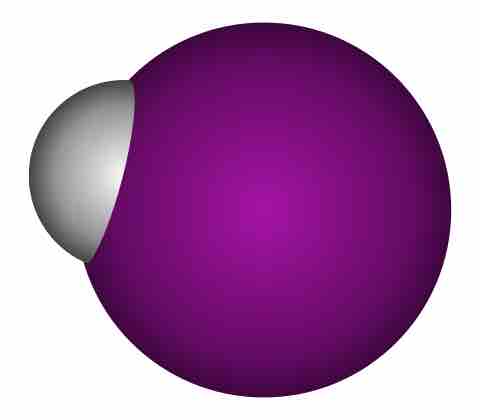Predicting the Direction of a Reaction
Equilibrium constants can be used to predict whether a reaction will favor the products or the reactants. K is the equilibrium ratio of products to reactants. The value for K is large (greater than one) when the products dominate the mixture and small (less than one) when the reactants dominate the mixture:
- K > 1: products are favored
- K = 1: neither reactants nor products are favored
- K < 1: reactants are favored
If the reaction favors the products, it will occur in the forward (left-to-right) direction. If K is very large, the reaction will occur mostly to completion, using up almost all the reactants. If the reaction favors the reactants, it will occur in the reverse (right-to-left) direction. If K is very small, the reaction will use up almost all the products and make them into reactants.
Reaction Quotients and Predicting Direction
The equilibrium constant is only used when a reaction has reached equilibrium. If a reaction is not at equilibrium, you can use the reaction quotient, Q, to see where the reaction is in the pathway:
- Q > K: reactants are favored
- Q = K: reaction is at equilibrium
- Q < K: products are favored
If you know the equilibrium constant for a reaction, and you know all the concentrations, you can predict in what direction the reaction will proceed.
Example 1: If 1.0 x 10-2 moles of hydrogen gas and 1.0 x 10-2 moles of iodine gas are placed in a 1-liter flask at 448 °C with 2.0 x 10-3 moles of HI , will more HI be produced?

Hydrogen Iodide
Space-filling model of hydrogen iodide
Solution: The balanced equation for the reaction is:
The reaction quotient under these conditions is:
This value is smaller than the equilibrium value of 50.53, which tells us there is an excess amount of reactants present. Therefore, the reaction will proceed in the forward direction.
Example 2: If only 1.0 x 10-3 moles of H2 and 1.0 x 10-3 moles I2 had been used, together with 2.0 x 10-2 mole of HI, would more HI have been produced spontaneously?
Solution: You can verify that Q = 400. This value is greater than the equilibrium value: there is now too much of the products for equilibrium to exist. Therefore, the reverse reaction is favored.